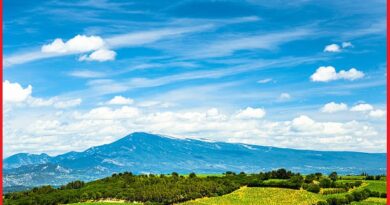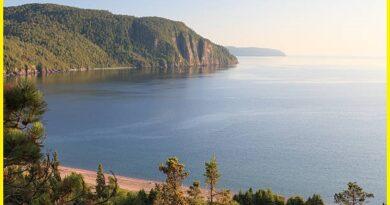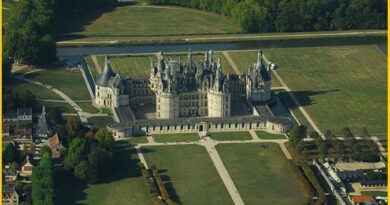Ngorongoro Crater: A UNESCO Treasure in the Heart of Africa
Ngorongoro Crater
The centerpiece of the Ngorongoro Conservation Area is the Ngorongoro Crater, the world’s largest inactive, intact, and unfilled volcanic caldera. Formed two to three million years ago when a massive volcano erupted and collapsed on itself, the crater is approximately 610 meters deep, with a floor spanning 260 square kilometers. Estimates suggest that the original volcano stood between 4,500 and 5,800 meters tall. Today, the crater floor lies at an elevation of 1,800 meters above sea level.
The Ngorongoro volcano was active between 2.45 and 2 million years ago, and similar volcanic collapses created the smaller calderas of Olmoti and Empakaai. The Munge Stream flows northward from the Olmoti Crater and serves as the primary water source for the seasonal salt lake at the center of the Ngorongoro Crater. This lake is known by two names: Makat, meaning “salt” in Maasai, and Magadi. The Lerai Stream, originating from the humid forests south of the crater, sustains the Lerai Forest on the crater floor.
Ngorongoro Crater Map
The Ngorongoro Crater map shows a great land area not only Ngorongoro Crater but all of Ngorongoro Crater conservation area and all its unique attraction points.

Ngorongoro Crater Weather
Geology
The Pliocene Ngorongoro volcanic group comprises eight extinct shield volcanoes located within the Eyasi half-graben, bordered to the east by the Gregory Rift’s Western Escarpment and to the southwest by the Lake Eyasi escarpment. Among these volcanoes, five are dome-shaped cones, while three feature calderas. Ngorongoro Volcano (2.5–1.9 million years ago) is primarily composed of basaltic trachyandesite. The caldera is sustained by the Munge and Oljoro Nyuki Rivers, with the Ngoitokitok hot springs feeding the Goringop swamp. Lake Magadi, a shallow alkaline lake with a depth of 1.7 meters, also lies within this system.
Other volcanoes in the complex include Olmoti (2.01–1.79 million years ago), Empakaai, Loolmalasin, Sadiman (3.7 million years ago), Lemagrut, and Oldeani. The northwest section of the conservation area encompasses the Serengeti Plains, Salei Plains, Oldupai Gorge, and the Gol Mountains inselbergs. These inselbergs are quartzite and mica schist formations from the Mozambique Belt, dating back approximately 800–500 million years.
The Ngorongoro Conservation Area
The Ngorongoro Conservation Area encompasses vast highland plains, savannas, woodlands, and forests. Established in 1959 as a multiple-use area, it allows wildlife to coexist with semi-nomadic Maasai pastoralists who practice traditional livestock grazing. At its heart lies the breathtaking Ngorongoro Crater, the world’s largest caldera. This area holds global significance for biodiversity conservation, hosting numerous threatened species, and a high density of wildlife, and serving as a key route for the annual migration of wildebeest, zebras, gazelles, and other animals across the northern plains. Additionally, extensive archaeological discoveries within the area provide a rich record of human evolution and interactions with the environment, including early hominid footprints dating back 3.6 million years.
Oldupai or Olduvai Gorge
Ngorongoro Crater National Park
The Ngorongoro Crater is not a national park but a part of the Ngorongoro Conservation Area (NCA) in northern Tanzania, a UNESCO World Heritage Site. The NCA was established in 1959 as a multiple-use area, where wildlife conservation, archaeological heritage, and the traditional practices of the Maasai people coexist.

Unlike national parks such as Serengeti, the Ngorongoro Conservation Area allows for multiple uses, including wildlife conservation and Maasai livestock grazing. It is managed by the Ngorongoro Conservation Area Authority (NCAA), not the Tanzania National Parks Authority (TANAPA).
Sanctuary Ngorongoro Crater camp
Sanctuary Ngorongoro Crater Camp is a luxury safari accommodation located near the Ngorongoro Crater rim, offering an exceptional base for exploring this UNESCO World Heritage Site. The camp combines comfort with immersive wildlife experiences, making it a popular choice for travelers seeking a premium yet intimate safari adventure.
Ngorongoro Crater Safari
A safari in the Ngorongoro Crater is one of Africa’s most iconic wildlife experiences, offering incredible scenery, rich biodiversity, and unparalleled opportunities to observe animals in their natural habitat.
Wildlife Abundance: The crater is home to about 25,000 large animals, including the Big Five (lion, leopard, elephant, buffalo, and rhino). It is one of the best places in Africa to spot the rare black rhinoceros.
Diverse Ecosystems: The crater floor includes grasslands, swamps, forests, and a salt lake (Lake Magadi), creating a habitat for various species. Scenic Beauty: As the world’s largest unbroken caldera, the Ngorongoro Crater offers breathtaking panoramic views from its rim.
Highlights of a Safari
Game Drives: Safaris typically start early in the morning for the best wildlife sightings. Open safari vehicles with experienced guides provide optimal viewing. The crater floor is ideal for observing predators, herbivores, and birdlife.
Bird Watching: Over 500 bird species can be found, including flamingos on Lake Magadi, crowned cranes, and secretary birds. Best during the wet season when migratory birds arrive.
Cultural Interaction: Visit nearby Maasai villages to learn about traditional culture and lifestyle. The Maasai are integral to the Ngorongoro ecosystem, with historical coexistence alongside wildlife. Picnic Sites: Enjoy packed meals at designated spots like Ngoitokitok Springs, surrounded by hippos and beautiful scenery.



